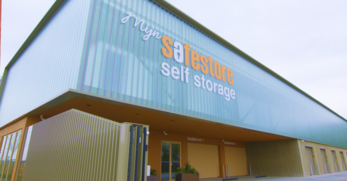3 Minutes01/10/2023
There is a lot to keep track of when your company has Safety Walks on the agenda. There are many things to keep in mind, and it is easy to miss something. In this article, we list 5 tips to help make your safety walks more effective and successful.
What is a safety walk?
A Safety Walk, also known as a Safety Round is when a workplace conducts a visual inspection of the workplace to identify and address unsafe and potentially unsafe conditions. Many believe that the key to success lies in changing people's attitudes towards safer behavior. This is most efficiently done by creating a greater awareness of the importance of safety, thereby strengthening the company's safety culture.
Safety Walks are an efficient tool to create a safety culture, and in addition, these safety walks contribute to behavioral-based safety (BBS) in the workplace. Safety Walks help to break routines and habits where we have become blind to risks in our everyday work.
1. Define the area
Make sure to define the area prior to the Safety Walk. If the area for your Safety Walk is too large or has too many stops, people might easily let their focus shift or start to lose focus altogether. Define the area and make sure it is a good size, and if there are too many stops, make sure to divide the safety walk into two rounds. One tip here is to do a test run before to make sure that the length feels appropriate and works well with what you have planned to discuss. In addition, keep in mind that if the attendees have many questions it might take longer than your initial plan.
2. Use predefined questions
We recommend using a form with pre-defined questions, so you know what to look for during the Safety Walk. This leaves less room for error and minimizes the risk of the human factor degrading the quality of your Safety Walk. The human factor can mean that important details are forgotten or not given the attention they need and deserve.
3. Use tools to add observations during your Safety Walk
Using a tool during your Safety Walk to easily record and report observations or incidents is something we would like to highly recommend. It facilitates the follow-up work after the Safety round, as the observation has already been recorded during the Safety Walk.
During a Safety Walk you may discover a variety of things during the round, if these can be reported at the moment it reduces the risk of details being forgotten as if you were to wait until after the safety round and report the observations then.




